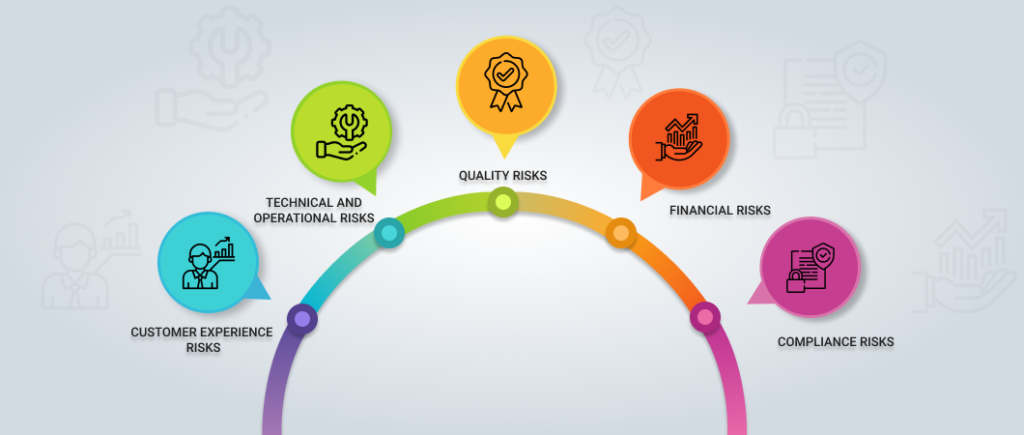Last updated on April 30th, 2021
Gone are those days when a product once developed and tested was considered final for shipping. Organizations did not upgrade products for so long that a new release was often promoted as a “next-generation” product. Even users were habituated to using the same product for a long time. Of course, that has changed now.
Today’s users expect always more features and benefits from a product. Their expectations and needs evolve continuously. Organizations have to constantly innovate to retain users and acquire new ones.
This has led organizations to adopt new technologies such as cloud and practice methodologies such as DevOps and Agile to quickly develop, test, and release new products and product versions. However, this need for speed could bring with it some risks. Let’s look at the common types of risks that a product might face during development.
Here are some ways to manage the product development risks effectively.
1. Focus on the user interface (UI) and user experience (UX)
The UI and UX are essential to a good product. In fact, studies reveal that every dollar a company invests to increase usability receives $10-$100 in benefits and wins customer satisfaction and loyalty. The only way to solve the customer experience risk is by focusing on the product’s UI and UX. The product development team should:
Today’s users expect always more features and benefits from a product. Their expectations and needs evolve continuously. Organizations have to constantly innovate to retain users and acquire new ones.
This has led organizations to adopt new technologies such as cloud and practice methodologies such as DevOps and Agile to quickly develop, test, and release new products and product versions. However, this need for speed could bring with it some risks. Let’s look at the common types of risks that a product might face during development.
5 Common Product Development Risks
1. Customer experience risks
The product may either miss out on key features that a user expects from the product or have too many features that could confuse the user. In some cases, the product might not solve an important enough problem at all. Utility and user experience are now the twin pillars that support a successful product. So, the outcome will be disastrous if the product does not offer a good experience to its users.2. Technical and operational risks
To meet the rapidly changing user expectations, organizations need to invest in modern tools, technologies, and new processes. They also need to have a team of experts who can quickly strategize and build new products or features. This may often come down to the ability to convert a product or feature idea into a working product at pace and with skill. Failure to invest in technical capabilities, skilled resources, and an execution mindset could severely hurt the product and result in unmanageable technical debt and deep operational risks.3. Quality risks
Sometimes organizations compromise on the product quality in a bid to launch the product quickly. However, users will use a product only if its quality passes muster. Quality covers everything from the user interface to the security of the product. Users today will lose interest or trust if the product does not meet their quality expectations, becomes non-functional, or presents a clunky or sub-optimal working experience.4. Financial risks
Organizations could run into financial risks if their product development budget is mismanaged. Organizations will face a tough time developing, innovating, and marketing the product if they do not find a way to develop, test, and release the product within their resources. This often depends on their ability to choose the right technology partner with the perfect set of skills and execution ability.5. Compliance risks
Users have become increasingly aware of how some organizations misuse their data. Hence, they expect organizations to be transparent about data privacy. Even governments have imposed strict regulations such as CCPA and GDPR to safeguard data privacy. Falling short of these compliance regulations could attract heavy fines for the organization and stall product uptake.How To Manage These Product Development Risks?
Here are some ways to manage the product development risks effectively.
1. Focus on the user interface (UI) and user experience (UX)
The UI and UX are essential to a good product. In fact, studies reveal that every dollar a company invests to increase usability receives $10-$100 in benefits and wins customer satisfaction and loyalty. The only way to solve the customer experience risk is by focusing on the product’s UI and UX. The product development team should:
- Research on the persona of their end-user and their product expectations
- Plan a roadmap on how the user must use the product
- Create a detailed wireframe to build the initial structure of the product
- Create a prototype to ensure that it meets the user’s expectation



